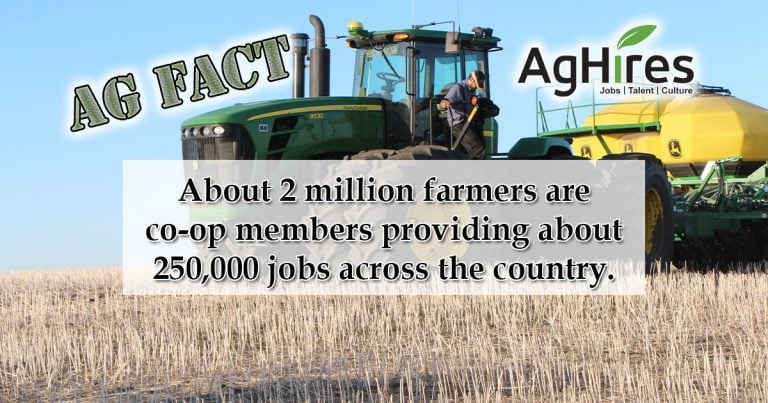
October is National Co-op Month. According to CoopMonth.com, this year’s theme, “Build Back for Impact” provides a chance to "leverage our shared cooperative identity in the face of some of the biggest challenges we face.” Agricultural cooperatives have made a major impact on the agriculture industry around the world. Co-ops make it possible for farmers to work together and make decisions and share profits among members. These co-ops usually are also major supporters of local communities.
Here are some facts about Agricultural Cooperatives!
- There are more than 2,100 co-ops in the United States
- Over 2 million U.S. farmers are members of a co-op.
- Ag Co-ops provide about 250,000 jobs across the country.
- Around the world, there are over 1.2 million Ag co-ops.
- The Midwest is home to most of the top Ag Cooperatives, the majority of which are in Iowa and Minnesota.
- In 1948, Minnesota was the first state to officially declare October as National Co-op Month.
- The National Co-Op Month was not nationally recognized until 1964 when Orville Freeman, the U.S. Secretary of Agriculture at the time, declared it.
- Food co-ops create 9.3 jobs for every $1 million in sales.
- In 2017, Farm Credit granted 57,000 new loans, totaling in $9.2 billion, to young producers (under the age of 36), growing access to careers in agriculture.
- The average wage paid to workers in a co-op is $19.67/hour, which is about $7 more than minimum wage.
- The earliest formal co-ops appeared in Europe during the industrial revolution to protect people from abusive store owners and businesses.
- Rochdale, England is dubbed as the birthplace of the modern cooperative movement.
- There are seven cooperative principles adopted by the International Co-Operative Alliance. The values are based on the Rochdale Principles, which were created in 1844.
- Putney Food Co-op in Putney, Vermont has been in business for 80 years. It was founded in 1941 due to fuel shortages caused by World War II which prevented access to certain grocery items.
- On average, local products make up 21% of sales at grocery co-ops. In comparison, locally-produced products only account for 1.8% of sales at national markets and stores.
- In the U.S., the first recorded dairy and cheese cooperatives were formed in 1810.
How Do Ag Co-Ops Work?
Surprisingly, the co-op model has existed for about as long as farming has become a profession. When early farmers needed land and supplies to get their business started, members in a cooperative group would pool their financial resources and expertise together to support one another’s farms.
In today’s model, a group of independent farmers operate collectively to accomplish substantial long-term success and reap the benefits of working together. They can save on costs by work together to buy necessary supplies and services, as well as distribute, market, and sell their products. They may also have access to services and goods that might be unavailable to them otherwise.
Want more Agriculture Facts? Click here
Follow us on Facebook and Twitter to get your weekly dose of Ag Facts.
Sign Up for Our Email Newsletter and get ag facts bi-monthly, plus new jobs in agriculture.
Sources:
National Cooperative Business Association Clusa International






